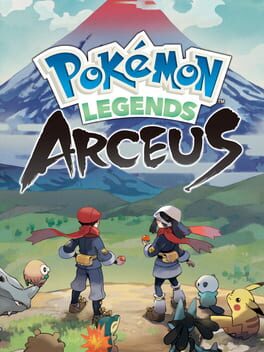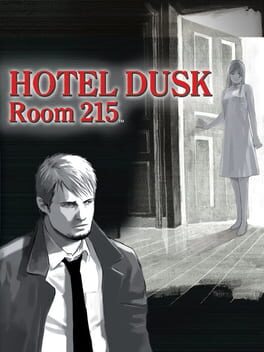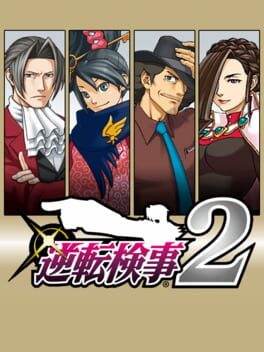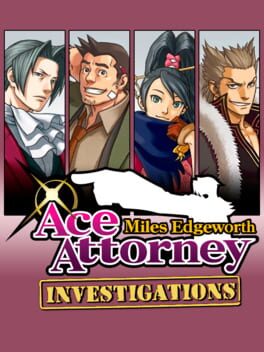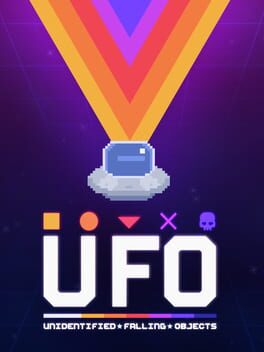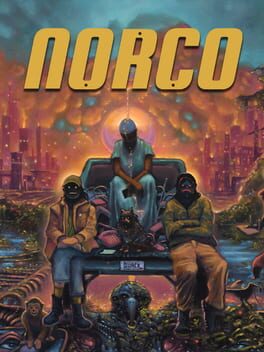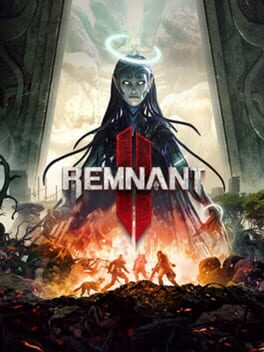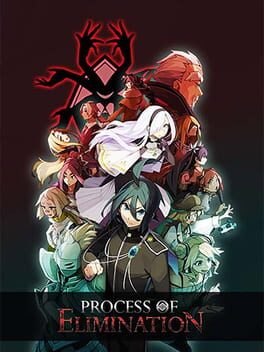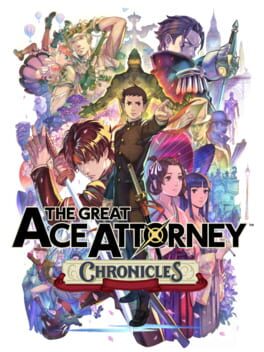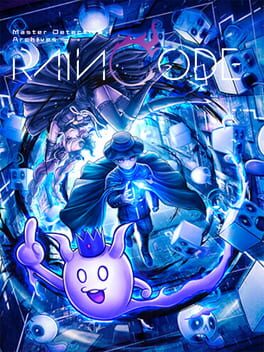fontiago
2024
There are heaps of interesting tactical decisions to make in designing your units to decimate the swordfodder obstacles in the way of you becoming The Nicest King Ever, but at least a quarter of the “skill” i built to play this game was “shuffling around pieces in your unit pre-fight to get a better RNG roll on the battle”. The preview screen holds a death grip on the entire combat experience: the information you are given is neither ‘perfect’ enough to do your own work, nor vague enough to allow improvisation and confidence to be your weapons, and so you ultimately have a black box simulator to press Go on when the numbers are good. I didn’t hate playing it, but from a theory perspective, this thing is not working to its potential.
And while I still have some qualms with 13 Sentinels’ plot despite enjoying it overall – considering its intricacy, I didn’t expect most every beat of Unicorn Overlord to be as complex as a butter sandwich. It is so, so flatly incurious about its characters’ interiority that it’s actually shocking. Every support conversation I saw was like a grey-boxed version of a scene that could be formulaic, but maybe charming too, if it were fleshed out – but they aren’t! The whole reading experience is at a level of cathexis and fidelity similar to a cheap flavored sparkling water.
The art’s execution is unsurprisingly good, though the character designs’ gender dimorphism is offputtingly consistent. Like, listen, I love Yahna’s b-cups, I’m not a joyless dyke, but if the women get to be this flamboyant and cheesecakey then why the hell do the men have no asses and stand like it’s their turn to play the xbox? Like at least give Ithillion some cheeks. It’s right there. Cowards. Anyway the HD2D by way of ‘overworld sprites illustrated like they could be pixelized but are left at full resolution’ is surprisingly good looking as well. also the mining minigame is weirdly satisfying. Overall I just feel worn down by the constant, tectonic level of friction between what the game could be, and what they actually did with it. (played on highest default difficulty, approx 130 hour final time)
And while I still have some qualms with 13 Sentinels’ plot despite enjoying it overall – considering its intricacy, I didn’t expect most every beat of Unicorn Overlord to be as complex as a butter sandwich. It is so, so flatly incurious about its characters’ interiority that it’s actually shocking. Every support conversation I saw was like a grey-boxed version of a scene that could be formulaic, but maybe charming too, if it were fleshed out – but they aren’t! The whole reading experience is at a level of cathexis and fidelity similar to a cheap flavored sparkling water.
The art’s execution is unsurprisingly good, though the character designs’ gender dimorphism is offputtingly consistent. Like, listen, I love Yahna’s b-cups, I’m not a joyless dyke, but if the women get to be this flamboyant and cheesecakey then why the hell do the men have no asses and stand like it’s their turn to play the xbox? Like at least give Ithillion some cheeks. It’s right there. Cowards. Anyway the HD2D by way of ‘overworld sprites illustrated like they could be pixelized but are left at full resolution’ is surprisingly good looking as well. also the mining minigame is weirdly satisfying. Overall I just feel worn down by the constant, tectonic level of friction between what the game could be, and what they actually did with it. (played on highest default difficulty, approx 130 hour final time)
Like drinking a Mountain Dew Baja Blast, except it takes 80 hours and for the middle 50 you have to stop drinking and eat a shitload of dry crackers. Far too experiential to distill so I'll just give some qualia.
Good: Yuffie is still insanely fun to play, just like in Intergrade, and the combat stays interesting throughout. Queen's Blood (the card game minigame) is good enough that it almost single-handedly carried my interest through a lot of the game. Barret's voice acting, characterization, and story are deft, and by far the best narrative element in the game when they're not being undermined by unrestrained tonal shifts. Lots of other interesting little tidbits, and the overall narrative of the Remakes continues to be really fascinating.
Bad: A Mario Party-esque number of minigames and constant narrative asides and segments that should have been cut. An overwhelming number of unimaginative environments fill out the open world – have you ever seen a desert canyon? A rural plain? A jungle? A scrapyard city? Disneyland? Then you already know exactly what those environments will look like in FF7R2. I don't complain about technical issues like this from a place of "it should meet my standards for polish", but in a game where the devs clearly had very high standards for everything, the frequently jank-as-hell movement animations and straight-up bad lighting in many areas really stick out as casualties of a project whose chief concern is breadth over depth.
IMO, watch an LP of this game so you can skip frequently and passionately. Even beelining through the story there's just so much nothing I think it might genuinely not be worth it.
Good: Yuffie is still insanely fun to play, just like in Intergrade, and the combat stays interesting throughout. Queen's Blood (the card game minigame) is good enough that it almost single-handedly carried my interest through a lot of the game. Barret's voice acting, characterization, and story are deft, and by far the best narrative element in the game when they're not being undermined by unrestrained tonal shifts. Lots of other interesting little tidbits, and the overall narrative of the Remakes continues to be really fascinating.
Bad: A Mario Party-esque number of minigames and constant narrative asides and segments that should have been cut. An overwhelming number of unimaginative environments fill out the open world – have you ever seen a desert canyon? A rural plain? A jungle? A scrapyard city? Disneyland? Then you already know exactly what those environments will look like in FF7R2. I don't complain about technical issues like this from a place of "it should meet my standards for polish", but in a game where the devs clearly had very high standards for everything, the frequently jank-as-hell movement animations and straight-up bad lighting in many areas really stick out as casualties of a project whose chief concern is breadth over depth.
IMO, watch an LP of this game so you can skip frequently and passionately. Even beelining through the story there's just so much nothing I think it might genuinely not be worth it.
Really excellent boss battles. Most powers felt great. Platforming feels amazing, and there are many challenge rooms for Xerxes coins to put you to the test there. Character designs and modeling was good as well as attack VFX, and VO was generally good. Some cute puzzles. A lot of good, enough so that I feel too harsh giving it a 3.5, but it's close. Now for the complaints!
The world art is disappointingly AAA. Sand looks like sand, terrain looks like terrain. Saturated, beautiful, lush colors are not common in this game. So much of the map, especially early areas, is just made out of straight X or Y dimension platform segments in plenty of areas that don't amount to any notable sense of visual storytelling. Eventually, you get to some areas with impressive color use and visual design, including one particularly imaginative water area, but they feel a bit like outliers. (Also, funnily enough, you undo the imaginative premise of that water area midway through it so it kind of just becomes less cool.)
The game's screen-to-screen level design is generally pretty fun especially when you get your double jump and can really string shit together. However, the macro level design of the map is often meandering and flavorless. There are a plethora of one-way gates, but they’re infrequently hidden and often act as dead ends in sections with no clear way to go because of lacking visual and geometric cues. Part of the magic in Dark Souls of a one-way is being confronted with an important one right on the main path, or having them hidden so that you stumble into a loopback and go "oh wow, i didn’t know this would connect here!" – this game just branches all the time with impassible walls (due to cardinality or due to lack of upgrades) always a room or two away from where you want. This resulted in a strong feeling of me playing the map screen and not the game itself sometimes, because rooms melt away from your thoughts pretty instantly after leaving them, especially when there's rarely any gimmick or iconic shapes to drag your virtual body against and feel.
Generally feels like it was lacking one more big pass of polish. Several unfinished looking VFX of platforms instantly disappearing beneath you, and a lacking sound mix that felt incomplete. Sound effects are inconsistent in volume and several boss battles seemed to have no music (in addition to two different bosses failing to play their cutscenes the first time i walked into their arenas which really messes up the functional storytelling they at least attempt to do). And the story flirts with being interesting at times cases but overall is just halfway-realized.
In conclusion, Mount Qaf is a land of contrasts
The world art is disappointingly AAA. Sand looks like sand, terrain looks like terrain. Saturated, beautiful, lush colors are not common in this game. So much of the map, especially early areas, is just made out of straight X or Y dimension platform segments in plenty of areas that don't amount to any notable sense of visual storytelling. Eventually, you get to some areas with impressive color use and visual design, including one particularly imaginative water area, but they feel a bit like outliers. (Also, funnily enough, you undo the imaginative premise of that water area midway through it so it kind of just becomes less cool.)
The game's screen-to-screen level design is generally pretty fun especially when you get your double jump and can really string shit together. However, the macro level design of the map is often meandering and flavorless. There are a plethora of one-way gates, but they’re infrequently hidden and often act as dead ends in sections with no clear way to go because of lacking visual and geometric cues. Part of the magic in Dark Souls of a one-way is being confronted with an important one right on the main path, or having them hidden so that you stumble into a loopback and go "oh wow, i didn’t know this would connect here!" – this game just branches all the time with impassible walls (due to cardinality or due to lack of upgrades) always a room or two away from where you want. This resulted in a strong feeling of me playing the map screen and not the game itself sometimes, because rooms melt away from your thoughts pretty instantly after leaving them, especially when there's rarely any gimmick or iconic shapes to drag your virtual body against and feel.
Generally feels like it was lacking one more big pass of polish. Several unfinished looking VFX of platforms instantly disappearing beneath you, and a lacking sound mix that felt incomplete. Sound effects are inconsistent in volume and several boss battles seemed to have no music (in addition to two different bosses failing to play their cutscenes the first time i walked into their arenas which really messes up the functional storytelling they at least attempt to do). And the story flirts with being interesting at times cases but overall is just halfway-realized.
In conclusion, Mount Qaf is a land of contrasts
Credit where credit is due, they experimented with a lot here, but I think there was a lot to improve on in the experiments. It's a game where the BOTW sense of "what could be around this next hill" exploration-danger-excitement is paramount to maintaining its velocity and its flight. The fact that the majority of mons you find are ones you've already seen before as a Pokemon fan doesn't hurt this, really; in fact the uncanny recontextualization of "bunch of animals you make do moves" in all other Pokemon games into "wild animals that can hurt you" is quite effective. I really like the idea of literally building the Pokedex, playing the role of a researcher, but there are so many repeated, boring metrics for every entry ("number you've caught" etc). My suspended disbelief that I wasn't just filling in a premade spreadsheet was broken through pretty early, and the sense of discovery turned to a sense of chore.
As a 3D action game, there's again a number of interesting ideas and as many lackluster decisions. The pokeball throwing was interesting and I liked the sense of picking the right tool for the job, until I got a Great Ball which was flat out better than the interesting tradeoff ball. The aforementioned sense of spatial mystery really waned once I got the first mount pokemon, Wyrdeer, and was suddenly able to bolt across the map, jump significant heights up terrain, and look around with a zoomed-out camera that really hurts your sense of place and scale. (Ursaluna's riding behavior was much better than Wyrdeer's as a gameplay flavor, but it's a specialist, not your main mount.) The vibes of the game beg that pokemon are recognized as wild, unwieldy animals –under your control, they never are.
That extends to combat as well, which has some interesting alterations from the norm but has no sense of spatial play to it (despite your inexplicable ability to walk around the arena area during a fight). Multiple pokemon at once can challenge you, but your mons just stand in the middle doing whatever you tell them to. Agile/Strong move styles are quite a cool idea, and variable action orders are a cool idea. But in battle, it never plays and behaves as something recognizably new. It's just Pokemon. There is a little sense of space and analogue movement in the unfortunately shallow boss battles... but your pokemon aren't involved in that feeling at all.
This is not to say the game completely undercuts itself creatively, but the highs were not outweighing the lows for me. Also, the usual "opposing teams arguing about ideology" story content gave me a headache. It's literally just this tweet.
As a 3D action game, there's again a number of interesting ideas and as many lackluster decisions. The pokeball throwing was interesting and I liked the sense of picking the right tool for the job, until I got a Great Ball which was flat out better than the interesting tradeoff ball. The aforementioned sense of spatial mystery really waned once I got the first mount pokemon, Wyrdeer, and was suddenly able to bolt across the map, jump significant heights up terrain, and look around with a zoomed-out camera that really hurts your sense of place and scale. (Ursaluna's riding behavior was much better than Wyrdeer's as a gameplay flavor, but it's a specialist, not your main mount.) The vibes of the game beg that pokemon are recognized as wild, unwieldy animals –under your control, they never are.
That extends to combat as well, which has some interesting alterations from the norm but has no sense of spatial play to it (despite your inexplicable ability to walk around the arena area during a fight). Multiple pokemon at once can challenge you, but your mons just stand in the middle doing whatever you tell them to. Agile/Strong move styles are quite a cool idea, and variable action orders are a cool idea. But in battle, it never plays and behaves as something recognizably new. It's just Pokemon. There is a little sense of space and analogue movement in the unfortunately shallow boss battles... but your pokemon aren't involved in that feeling at all.
This is not to say the game completely undercuts itself creatively, but the highs were not outweighing the lows for me. Also, the usual "opposing teams arguing about ideology" story content gave me a headache. It's literally just this tweet.
1996
It's mario 64, like, what am I supposed to say? I've of course played it before, but my review now is prompted by doing a marathon of the game with randomized entrances. I was really struck by how many of the stars across each painting are just different little puzzles, like the entrance to Make Wiggler Squirm, and by how much Bowser in the Sky is a compilation of elements from previous levels (it's obvious, i just never noticed somehow!). There are so many levels with truly arbitrary placements of random physics toys, and frankly more games need that kind of ideology in design. Purely a matter of adding analog areas that have texture-rich interactions with the player's movements. As my friend Cera said, if there were a Criterion Collection for video games, this would be in the first 5 chosen.
2007
Some of the best acting performances I’ve seen in a game, “performed” through the simply sublime animations and wildly good localization. Louis in particular is the most homie I’ve ever felt about a video game character I think. Mystery itself is decent as a plot engine though it doesn’t quite come together as deftly as I wanted it to. Puzzles are fun enough, and in general there weren’t too many weird roadblocks in progression, though I kept a walkthrough on hand which came in handy a few times. As a heavily narrative focused game, the moments of iffy UX leading to me looking at said walkthrough didn’t bother me too much, though. Just a damn good game.
AAI is an interesting experiment in increasing the tactility and fidelity of solving AA cases but i think an ultimately failed one. Every case turns into a monumental slog where you have to connect 4 pieces of AAI evidence to do the job of a single mainline AA piece of evidence, and because they still need to signpost these movements, you just get a total bloat of functional text leading to and resolving from the 'presenting evidence' moments. It's an inverted celebration of how good the mainline formula is.
And at a distance, AAI2 should be quite good, really. The macro mystery and coordination is great. There are several great characters. Logic Chess is fantastic and deserves some revival in the series as a method of conversational information-grabbing. But getting through all of it is like manually turning the wheels on a car. We could have just walked there – in fact, there's a whole main series where we do just walk there. BuT tHaT's NoT tHe PrOsEcUtOr'S pAtH
also, whoever decided that they should localize the japanese "Ee?" into english as characters literally saying "Eh?", turn on your location i just want to talk
And at a distance, AAI2 should be quite good, really. The macro mystery and coordination is great. There are several great characters. Logic Chess is fantastic and deserves some revival in the series as a method of conversational information-grabbing. But getting through all of it is like manually turning the wheels on a car. We could have just walked there – in fact, there's a whole main series where we do just walk there. BuT tHaT's NoT tHe PrOsEcUtOr'S pAtH
also, whoever decided that they should localize the japanese "Ee?" into english as characters literally saying "Eh?", turn on your location i just want to talk
It gets a bit of momentum in the 4th and 5th chapters but ultimately full of nigh-amateurish planning and truly awkward logic. I constantly found the game showing you a picture of a guy with an orange and asking "What spot in the image proves this person enjoys fruit?". Typically excellent character designs and animations, a great quip every so often, and mostly good music (the Little Thief cue is a hell of a "RZA at Guitar Center" type beat though). I haven't played the sequel yet (i hear good things), but man, this is a great demonstration of how the AA mainline format is a significantly better fit for this style of mystery game than this adventure-esque format.
edit: i typed this yesterday when i thought the game was about to wrap up and there was 2 more hours of testimony. im in hell
edit: i typed this yesterday when i thought the game was about to wrap up and there was 2 more hours of testimony. im in hell
Enjoying this a lot so far, once I got the "pick up and throw" block mover instead of the kick I started liking the game a ton more. Haven't played with too many of the jumps but the side challenges have been fun and the core loop feels super fun. Firing sounds are a little weak and the music is slightly cloying but they're nbd. Also, the taking damage animation screenstop is a liiiiittle too long I think. Fun graphics and obstacle blocks.
2022
Enjoyed but the sound presentation consistently underwhelmed me and kept me at arm's length. Where I the player am stumbling clumsily through a nebulous, imaginative, beautifully evocative first person point'n'click pixel world, the sound and music are prosaic, empty, and downright normal at times. I just felt overall cold as a result, even despite the game showing me so much warm flesh to bite into. The combat bits also felt obligatory, and the top-down rotational map bits didn't rise past being bare-bones maps. Plot elements like the Garretts are interesting and certainly have their jokes but didn't feel like they ultimately came together into something arresting. In short, I got the feeling of depersonalization that certainly was at least somewhat intended, but it didn't feel like it dovetailed with the work.
While I'm listening to the credits music again while writing this - you've got this fascinating screamed vocal line like "The Black Stone" by Kayo Dot in the background with an interesting drone track and warping synths, but nothing builds to encompass you and the drums are just the flattest possible dinky little sounds - they sound lame. Punch me in the face with these drums, man, make me FEEL something, christ. Just not for me, I guess.
While I'm listening to the credits music again while writing this - you've got this fascinating screamed vocal line like "The Black Stone" by Kayo Dot in the background with an interesting drone track and warping synths, but nothing builds to encompass you and the drums are just the flattest possible dinky little sounds - they sound lame. Punch me in the face with these drums, man, make me FEEL something, christ. Just not for me, I guess.
2023
Incredible final boss, gunplay still great, and it finds utter joy in being a video game. There are a lot of really cool Souls-esque boss design twists you can do when every player has access to guns, and these folks keep finding more of them. The upgrade economy was a damper on the experience of beng able to test any new weapons effectively though. The procedural elements are cool though the main stories were generally just a bit underbaked despite cool lore (the One True King main quest was by far my favorite of what I played though). Labyrinth was my favorite world and Lament was my favorite dungeon. Not much else to say!
First things first, and this is a visual novel with a HEAVY emphasis on the novel part. There are traditional bits of gameplay throughout in the 'tactics investigation' sections but they are short and infrequent. Be prepared to read your ass off. Really, the lack of a thorough editing pass to shave off fully 25% or more of the word count in most sections is the greatest fault of the game – I suggest adapting to it instead of frustration but that's a personal matter. The wordiness isn't always negative though; where many other VNs i've played perhaps cut too much from pivotal scenes where the pacing NEEDS to slow down and gain gravitas and detail, PoE at least gets to put a lot of weight behind those scenes, and that helped build its relationship with me a lot.
Similarly, the art style and presentation of characters with the (nearly) fully-voiced Japanese lines is sublime. Even with over-exaggerated localized dialogue quirks you may expect from this kind of thing, just about every character won me over eventually, despite my initial hesitancy on many of them. The joyous character art and VA delivery definitely helps tide you over while the prose slowly works its way in. The main exception to the cast quality is the murder robots, which are very weakly executed overall, but even as someone who should be allergic to that kind of ... machina ex machina, they were managed OK enough that I didn't feel that they were a huge stain on the work. Even after I finished reading this mammoth thing, I was compelled enough by my favorite characters to replay the investigations for bonus scenes and the extra scraps of dialogue that come from the fact that basically any of your detectives can do any investigative action and they all have their own lines for each one.
The game will win zero originality awards, and yet where it could have been banal, hacky, and derivative, I feel it ultimately was written with love, wit, and deftness. There ARE original ideas, and what's more, the shortcomings of its forebears are recognized and often resoundingly corrected. The execution with this tempering ends up being as solid as a brick shithouse. This is something that really warms my heart about PoE: that it is clearly responding to its influences in this niche field, (relatively) big and weighty author names like Kodaka and Uchikoshi, and loves their work like I love their work, but affirms my conclusions on the attached games' structural shortcomings. Even with a clearly strained budget in places – you're going to see sooooooo goddamn much of a certain L-shaped hallway background with some different lighting fixtures, there are some puzzles that keenly feel like they were made for a breakout minigame section that isn't there, et cetera – there's good priority on which parts of the work have the biggest impact from dev resource allocation.
The tactics investigations are low key brilliant. They're never too long, so if you got way ahead of the mystery-solving, you're not too far from getting to prove it and progress; but they also present evidence and info in a novel-enough way for folks behind on the mystery-solving to follow along with the ride while they catch up. Additionally, controlling a whole group of detectives actually sells the feeling of you putting the case together as a team, and dovetailed well with the protagonist's confidence arc. Plus the sections have novel enough mechanics for it to not feel like completely unrelated, derivative minigame filler.
Finally, I think objectively this is more like a 4 or 3.5 but I fell in love with it so fuck the scale. The main reason I have to rate this so highly is that it has the best macro plot & villain resolution of any of these type of games I've played – there are so many of these psychologically-minded VNs where the ultimate conclusion is just "some people are Evil Ahhhh Oooohhhh!!! Mean!!" and that's THE inciting incident. Even some of the best ever are marred by this anticlimactic cop-out reasoning. PoE doesn't not have some of this in a character or two, but ultimately the villains' motivations are really not that and are instead rooted in some complex and fucking real places with the bonus scenes actually giving you further shading on them. And after having just played Kodaka's RAIN CODE a month or two back which is another incredibly back-and-forth-quality-level script of his style, I feel pretty confident in saying that yeah, the folks on Process of Elimination truly surpassed their influences in some really vital ways. It may be long-winded as fuck, but that wind is astute and confident. Also I wanna slap Doleful Detective's gay little ass fr
Similarly, the art style and presentation of characters with the (nearly) fully-voiced Japanese lines is sublime. Even with over-exaggerated localized dialogue quirks you may expect from this kind of thing, just about every character won me over eventually, despite my initial hesitancy on many of them. The joyous character art and VA delivery definitely helps tide you over while the prose slowly works its way in. The main exception to the cast quality is the murder robots, which are very weakly executed overall, but even as someone who should be allergic to that kind of ... machina ex machina, they were managed OK enough that I didn't feel that they were a huge stain on the work. Even after I finished reading this mammoth thing, I was compelled enough by my favorite characters to replay the investigations for bonus scenes and the extra scraps of dialogue that come from the fact that basically any of your detectives can do any investigative action and they all have their own lines for each one.
The game will win zero originality awards, and yet where it could have been banal, hacky, and derivative, I feel it ultimately was written with love, wit, and deftness. There ARE original ideas, and what's more, the shortcomings of its forebears are recognized and often resoundingly corrected. The execution with this tempering ends up being as solid as a brick shithouse. This is something that really warms my heart about PoE: that it is clearly responding to its influences in this niche field, (relatively) big and weighty author names like Kodaka and Uchikoshi, and loves their work like I love their work, but affirms my conclusions on the attached games' structural shortcomings. Even with a clearly strained budget in places – you're going to see sooooooo goddamn much of a certain L-shaped hallway background with some different lighting fixtures, there are some puzzles that keenly feel like they were made for a breakout minigame section that isn't there, et cetera – there's good priority on which parts of the work have the biggest impact from dev resource allocation.
The tactics investigations are low key brilliant. They're never too long, so if you got way ahead of the mystery-solving, you're not too far from getting to prove it and progress; but they also present evidence and info in a novel-enough way for folks behind on the mystery-solving to follow along with the ride while they catch up. Additionally, controlling a whole group of detectives actually sells the feeling of you putting the case together as a team, and dovetailed well with the protagonist's confidence arc. Plus the sections have novel enough mechanics for it to not feel like completely unrelated, derivative minigame filler.
Finally, I think objectively this is more like a 4 or 3.5 but I fell in love with it so fuck the scale. The main reason I have to rate this so highly is that it has the best macro plot & villain resolution of any of these type of games I've played – there are so many of these psychologically-minded VNs where the ultimate conclusion is just "some people are Evil Ahhhh Oooohhhh!!! Mean!!" and that's THE inciting incident. Even some of the best ever are marred by this anticlimactic cop-out reasoning. PoE doesn't not have some of this in a character or two, but ultimately the villains' motivations are really not that and are instead rooted in some complex and fucking real places with the bonus scenes actually giving you further shading on them. And after having just played Kodaka's RAIN CODE a month or two back which is another incredibly back-and-forth-quality-level script of his style, I feel pretty confident in saying that yeah, the folks on Process of Elimination truly surpassed their influences in some really vital ways. It may be long-winded as fuck, but that wind is astute and confident. Also I wanna slap Doleful Detective's gay little ass fr
https://cohost.org/eden/post/2198478-cw-serious-spoilers some mechanical thoughts on the game through a link for spoilers' sake but long story short, by far the best ace attorney game on every level. Deft at every turn. Even though the plot is so well-spread throughout the game, somehow the conclusion feels a little lesser compared to some of the middle chapters, but this is only my replay so I of course was a bit spoiled on the gravity of the final chapters. Often in AA games i start to get a bit skimmy as the momentum picks up but on this replay I was pressing every statement and presenting wrong conclusions in Deductions just to read more writing. Bravo.
One of the biggest flaws of this game is the pacing, feeling too fast and too slow at the same time, which is I think a casualty of the technical condition of the game itself being surprised that it is in Unreal Engine. The clunkiness of intra-scene cuts and transitions is a persistent stop-and-go damper on the experience.
Despite that, it's up to the bar of any Kodaka game, I think – there are a couple really lackluster chapters and overall the 'difficulty curve' of the logic is WAY too low, but there's also a couple of really great chapters and the overall story ultimately landed well enough for me. Main characters consistently hit pretty well (there are several that are complete misses but almost all of theme are only around for a short time) and, remarkably, for the first time in one of Kodaka's games, I felt like the ridiculous dramatization of "mystery-solving" into video game shit actually had some good panache and synergy... in places. In other places it becomes absolutely tooth-pullingly infantilizing beyond what even the 'logic difficulty curve' would indicate, or you do something via video game shit that realistically could have just been handled in a single multiple choice question, in classic Danganronpa fashion. But when it works... it does kinda work!
Shinigami-chan is a silly character and I've seen some complaints about her being too horny or wish-fulfillment-y, but I gotta say, I don't think they're that salient. More than half the time, she is a floating cartoon ghost blob, for one thing. And regardless of that, her character is consistent and stands up on its own – she just is a horny, immature-acting girl. Horny girls exist in reality and can be depicted in art without an immediate kneejerk classification of only being there for cis male gaze wish fulfillment. The playboy-type male character is significantly more of an issue, along with Shinigami's unchallenged personality around other women, but shrug. It's par for the course.
... so anyways, pretty good, I hope the DLC cases continue the quality because the format definitely allows for it. The city's open world-ish design is one of the "wow! modern game design" things that's actually executed well here, which is one of the important ones to get right; even when the pacing is utterly awkward in Rain Code, the vibes are there to carry it through.
Despite that, it's up to the bar of any Kodaka game, I think – there are a couple really lackluster chapters and overall the 'difficulty curve' of the logic is WAY too low, but there's also a couple of really great chapters and the overall story ultimately landed well enough for me. Main characters consistently hit pretty well (there are several that are complete misses but almost all of theme are only around for a short time) and, remarkably, for the first time in one of Kodaka's games, I felt like the ridiculous dramatization of "mystery-solving" into video game shit actually had some good panache and synergy... in places. In other places it becomes absolutely tooth-pullingly infantilizing beyond what even the 'logic difficulty curve' would indicate, or you do something via video game shit that realistically could have just been handled in a single multiple choice question, in classic Danganronpa fashion. But when it works... it does kinda work!
Shinigami-chan is a silly character and I've seen some complaints about her being too horny or wish-fulfillment-y, but I gotta say, I don't think they're that salient. More than half the time, she is a floating cartoon ghost blob, for one thing. And regardless of that, her character is consistent and stands up on its own – she just is a horny, immature-acting girl. Horny girls exist in reality and can be depicted in art without an immediate kneejerk classification of only being there for cis male gaze wish fulfillment. The playboy-type male character is significantly more of an issue, along with Shinigami's unchallenged personality around other women, but shrug. It's par for the course.
... so anyways, pretty good, I hope the DLC cases continue the quality because the format definitely allows for it. The city's open world-ish design is one of the "wow! modern game design" things that's actually executed well here, which is one of the important ones to get right; even when the pacing is utterly awkward in Rain Code, the vibes are there to carry it through.
I would to give a full review but my wonderful friend Nat already essentially wrote the thoughts I would have written, what the hell. https://www.backloggd.com/u/nex3/review/817646/ So I'll just tack on some of my thoughts?
I enjoyed the game so much until I just didn't. Somewhere around the time I first figured out how to kill Gleeoks, I think. Early on I found a King Gleeok up on a random platform in the sky and it was utterly terrifying - I thought wow, this might require some serious investment to beat. Later, I did get led into fighting a non-King one and it was scary and tense until I shot one of its eyes once and it collapsed like a house of cards for me to do ~30% of its health then got back up for a much easier 'second phase'. The same happened with Lynels, excepting the easier second phase. The combat feels great until it suddenly collapses and feels utterly flat, and I think that can be partially attributed to the ridiculous power spike that is bullet-time. Having a helping hand for precision mechanics is a great idea, but in a game where it feels like there's One way to hit those precision mechanics and you can trivially use the helping hand for like 10+ shots with a neglible setup cost, it just feels imbalanced to me, moreso than other 'knowledge gate' types of enemies in your Dark Souls and whatnots.
The Depths is cool for a little while after you figure out how it's generated and then you're just zooming around down there seeing the same pocket of enemies you always do, or world bosses that drop worse items than anything you have. I lost count of the number of times I opened a chest in this game and just closed it because it was something useless that I literally didn't want to pick up because all 20 weapons i already had were better than it. At least half. So combat generally worked, but at the high level it became a trivial solve AND not worth the time for the reward.
Anyways, I don't want to just grouse about the game and I'm still giving it 4 stars, so to throw in something I liked that Nat didn't mention, the Water and Fire temples were fun, very broad groups of puzzles that were also just open-ended enough for cheesy, out-of-the-box solutions that are just as satisfying. This is one of the first games I've ever played with a 'designed puzzle' focus where the possibility space of your abilities is genuinely so vast that it feels like every solution is a valid solution. Also I liked the writing and the story in general, even if it gave me whiplash how quickly it would move back and forth between self-assured storytelling that trusts the audience to watch, and over-enunciated dialogue filled with [red text phrases] repeated 3 times to make sure you clearly understood the [red text phrase]. Also I loved the Gerudo shelter section and Link's outfits are so sexy. Okay that's enough infodumping.
I enjoyed the game so much until I just didn't. Somewhere around the time I first figured out how to kill Gleeoks, I think. Early on I found a King Gleeok up on a random platform in the sky and it was utterly terrifying - I thought wow, this might require some serious investment to beat. Later, I did get led into fighting a non-King one and it was scary and tense until I shot one of its eyes once and it collapsed like a house of cards for me to do ~30% of its health then got back up for a much easier 'second phase'. The same happened with Lynels, excepting the easier second phase. The combat feels great until it suddenly collapses and feels utterly flat, and I think that can be partially attributed to the ridiculous power spike that is bullet-time. Having a helping hand for precision mechanics is a great idea, but in a game where it feels like there's One way to hit those precision mechanics and you can trivially use the helping hand for like 10+ shots with a neglible setup cost, it just feels imbalanced to me, moreso than other 'knowledge gate' types of enemies in your Dark Souls and whatnots.
The Depths is cool for a little while after you figure out how it's generated and then you're just zooming around down there seeing the same pocket of enemies you always do, or world bosses that drop worse items than anything you have. I lost count of the number of times I opened a chest in this game and just closed it because it was something useless that I literally didn't want to pick up because all 20 weapons i already had were better than it. At least half. So combat generally worked, but at the high level it became a trivial solve AND not worth the time for the reward.
Anyways, I don't want to just grouse about the game and I'm still giving it 4 stars, so to throw in something I liked that Nat didn't mention, the Water and Fire temples were fun, very broad groups of puzzles that were also just open-ended enough for cheesy, out-of-the-box solutions that are just as satisfying. This is one of the first games I've ever played with a 'designed puzzle' focus where the possibility space of your abilities is genuinely so vast that it feels like every solution is a valid solution. Also I liked the writing and the story in general, even if it gave me whiplash how quickly it would move back and forth between self-assured storytelling that trusts the audience to watch, and over-enunciated dialogue filled with [red text phrases] repeated 3 times to make sure you clearly understood the [red text phrase]. Also I loved the Gerudo shelter section and Link's outfits are so sexy. Okay that's enough infodumping.



